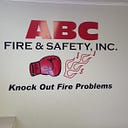Designing for Aesthetics: Integrating Fire Sprinkler Systems into Architecture
In the pursuit of creating aesthetically pleasing spaces, architects are continually challenged to balance form and function. When it comes to safety features like fire sprinkler systems, there’s a common misconception that incorporating them into the design compromises the visual appeal of a space. However, modern design principles and innovative technologies allow for seamless integration, ensuring that fire safety doesn’t come at the cost of architectural beauty.
Balancing Safety and Aesthetics
Fire sprinkler systems are a non-negotiable aspect of building safety, but their design has evolved to be more discreet and harmonious with architectural elements. Architects and designers now have a range of options to consider when integrating fire sprinkler systems into their projects, allowing for a cohesive and visually pleasing end result.
Concealed Sprinkler Heads
One of the most significant advancements in fire sprinkler design is the development of concealed sprinkler heads. These heads are recessed into the ceiling, remaining hidden from view when not in use. When activated, they deploy and function as effectively as traditional exposed sprinklers. This innovation enables architects to maintain a clean and unobstructed ceiling design, preserving the intended aesthetic of a space.
Customized Finishes
Architects can collaborate with fire sprinkler system manufacturers to choose customized finishes that complement the overall design scheme. From metallic finishes that match lighting fixtures to paintable surfaces that blend seamlessly with the ceiling, these options ensure that fire sprinklers become an integrated part of the design rather than an eyesore.
Decorative Covers
For spaces where sprinklers must be visible, decorative covers offer an elegant solution. These covers come in various designs and finishes, allowing architects to select options that enhance the overall aesthetic of the space. Whether mimicking architectural motifs or serving as discreet decorative elements, these covers turn functional components into design features.
Integrated Lighting Solutions
Incorporating fire sprinklers into integrated lighting fixtures is a creative approach to seamless design. Manufacturers offer lighting fixtures that double as sprinkler heads, providing a dual-function solution. This integration not only maintains the aesthetic appeal of the space but also optimizes functionality by combining lighting and fire safety features.
Architectural Elements as Sprinkler Housings
Architects can explore the possibility of incorporating fire sprinklers into existing architectural elements. For instance, columns, beams, or bulkheads can be designed to house sprinkler components without disrupting the overall aesthetic. This approach transforms functional elements into integral parts of the architectural narrative.
Transparency and Open Design
In spaces that prioritize transparency and open design, architects can opt for glass or acrylic coverings for sprinkler heads. These materials maintain the visual openness of the space while ensuring that sprinklers are still accessible for maintenance and functionality. This approach is particularly effective in modern and minimalist designs.
Collaborative Design Process
The key to successful integration lies in a collaborative design process. Architects, interior designers, and fire safety engineers should work together from the project’s inception to ensure that safety features are seamlessly woven into the overall design vision. By involving all stakeholders early on, potential design conflicts can be addressed, and innovative solutions can be implemented.
Case Studies: Successful Integration in Diverse Spaces
Residential Spaces: In residential designs, architects are increasingly incorporating fire sprinklers into ceiling designs that enhance rather than detract from the overall ambiance. Concealed sprinkler heads in living rooms, kitchens, and bedrooms ensure a streamlined look without compromising safety.
Hospitality Venues: Restaurants, hotels, and event spaces present unique design challenges. By utilizing decorative covers, custom finishes, and concealed sprinklers, these venues seamlessly integrate fire safety measures. The result is spaces that prioritize both safety and a welcoming atmosphere.
Commercial Offices: In modern office designs, the emphasis is on open layouts and collaborative spaces. Integrating sprinkler systems into architectural elements like suspended ceilings or utilizing concealed heads allows for the creation of functional, aesthetically pleasing work environments.
Historic Buildings: Preserving the architectural integrity of historic buildings while adhering to modern safety standards is a delicate balance. By customizing finishes, utilizing decorative covers, and strategically placing sprinklers, architects can maintain the historical character of the space.
Challenges and Solutions
While the integration of fire sprinkler systems into architecture has seen significant advancements, challenges still exist. One common concern is the perception that concealed sprinkler heads may compromise functionality due to potential obstructions. However, regular maintenance and adherence to design guidelines can mitigate these concerns, ensuring that sprinklers remain fully operational.
Another challenge involves retrofitting existing spaces with fire sprinkler systems. In such cases, architects must carefully navigate the constraints of the existing structure while finding creative solutions for seamless integration.
Conclusion: Safety in Harmony with Design
Designing for aesthetics while incorporating essential safety features is not a compromise but a creative challenge. Fire sprinkler system once considered obstacles to design, now offer opportunities for innovative solutions that enhance both safety and aesthetics. Architects play a pivotal role in championing this integration, ensuring that spaces not only meet safety standards but also inspire through thoughtful and cohesive design.
As the industry continues to advance, architects will find an expanding array of tools and options to seamlessly integrate fire sprinkler systems into their designs. The future holds the promise of even more sophisticated solutions that elevate safety measures to an integral part of architectural storytelling, reinforcing the idea that safety and aesthetics can coexist harmoniously in the built environment.
